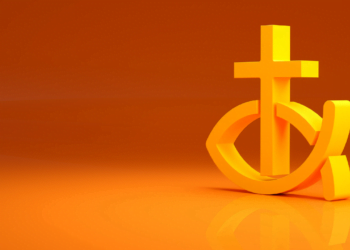No products in the cart.
The Use of Christian Symbols in Liturgical Dance
This post contains paid and/or affiliate links. I make a small commission at no extra cost to you. Please see our Privacy Policy.
The fascinating world of liturgical dance and Christian symbols’ role in this expressive form of worship. Liturgical dance combines movement and choreography to enhance the worship experience, allowing individuals to express their faith through physicality and grace. In this article, we will delve into the significance of Christian symbols in liturgical dance and how they enrich the spiritual journey of both dancers and congregants.
Worship is a cornerstone of the Christian faith, and liturgical dance adds a unique dimension to this age-old practice. By incorporating movement and expression, liturgical dance deepens the connection between worshipers and their faith. It invites individuals to engage their bodies, minds, and hearts, enabling a more profound worship experience.
Christian symbols play a crucial role in the artistry of liturgical dance. Just as words convey meaning, symbols have the power to evoke emotion and communicate universal truths. Whether it’s the baptismal font representing initiation into the Christian family, the altar symbolizing the center of worship, or the cross reminding us of Christ’s sacrifice, each symbol holds a rich and profound significance.
Through the creative use of Christian symbols, liturgical dance becomes a visual and symbolic expression of the worshiper’s devotion. As dancers move gracefully and intentionally, they bring to life the deeper meaning behind the symbols, providing a visual representation of faith, hope, and love.
In the following sections of this article, we will explore the symbolism of various Christian symbols in liturgical dance, delve into the meanings associated with different colors used in this worship, discuss the historical significance of liturgical dance, and explore its role in creating a transformative worship experience. We will also provide practical insights on implementing liturgical dance in worship services.
Join us on this enriching journey as we unravel the beauty and significance of Christian symbols in liturgical dance. Together, let us explore the power of movement, expression, and religious practices as we immerse ourselves in the wonders of this timeless art form.
Symbolism of Christian Symbols in Liturgical Dance
Christian symbols play a significant role in liturgical dance, enriching the symbolism and meaning behind each movement. Let’s explore the symbolism of some key Christian symbols used in liturgical dance:
Baptismal Font
The baptismal font symbolizes the rite of initiation and the entire community’s participation. It represents the cleansing and rebirth that baptism signifies.
Altar
The altar is the central focal point of worship and holds essential items such as the Communion utensils, candles, and the cross. It serves as a symbol of reverence and sacrifice.
Candles
Candles symbolize the presence of Christ as the light of the world. They are often lit and extinguished during worship, representing the eternal flame of faith and the transient nature of life.
Cross
As the central symbol of the Christian faith, the cross is prominently displayed in every sanctuary. It serves as a reminder of Christ’s sacrifice and represents love, redemption, and hope.
Paraments and Banners
Paraments and banners, coordinated in color and design, reflect the liturgical season and feature Christian symbols or biblical verses. They enrich the liturgical dance’s visual experience and enhance the worship atmosphere.
Vestments
Vestments worn by clergy represent their official attire and vary in color according to the liturgical year. They symbolize the sacredness of their role and the connection between the earthly and the divine.
Peace
The symbol of peace in liturgical dance represents love, reconciliation, and unity within the community. It signifies the peace from Christ and serves as a reminder for believers to pursue peace.
Anointing
Anointing, often performed during healing services and confirmation, involves pure olive oil. It holds specific meaning for individuals, symbolizing the presence of the Holy Spirit and the anointing of God’s favor.
Summary
Compared to the choir, Liturgical dance is a symbolic expression of praise and can enhance the overall worship experience. Incorporating these Christian symbols adds depth, meaning, and reverence to the movements, creating a powerful and transformative worship atmosphere.
Colors and Their Meanings in Liturgical Dance
Colors are vital in liturgical dance, adding depth and significance to the movements while conveying specific meanings. Each color holds its symbolism, enhancing the overall message of the dance performance.
Below are some standard colors used in liturgical dance and their associated meanings:
- Yellow: Symbolizes the glory of God.
- Orange: Represents praise and celebration.
- Light Blue: Associated with the Holy Spirit and divinity.
- Royal Blue: Signifies authority and priesthood.
- Sapphire Blue: Represents divine revelation and spiritual insight.
- White: Symbolizes purity, holiness, and the presence of light.
- Coffee: Associated with bread and the body of Christ.
- Gray: Represents maturity and wisdom.
- Black: Symbolizes death and sin.
- Gold: Represents divinity, purification, and glory.
- Silver: Symbolizes redemption, payment, and the value of faith.
- Purple: Associated with royalty, majesty, and the priesthood.
- Red: Represents the blood of Christ, sacrifice, and love.
- Rosa: Symbolizes brotherhood and loving unity.
- Green: Represents new and eternal life, prosperity, and hope.
Each color brings its unique symbolism and meaning to the liturgical dance performance, creating a multisensory experience that engages the dancers and the congregation.
Historical Significance of Liturgical Dance
Liturgical dance has a rich historical significance in the realm of worship. Since ancient times, dance has been a powerful means of expressing religious questions and ideas. In biblical times, dance was used as a form of worship and a joyful expression of faith, as exemplified by the dance of Miriam and David. It provided a unique way for individuals to connect with God and convey emotions, love, praise, thanksgiving, and reverence.
However, as worship settings became more formal and structured, dance gradually became limited to clergy and religious orders in convents and monasteries. The Renaissance period witnessed a decline in the use of dance in worship. However, there were religious sects like the Shakers who still incorporated dance into their worship practices, showcasing its enduring significance.
In recent years, there has been a resurgence of interest in liturgical dance, with a renewed focus on reclaiming its historical significance and reintegrating it as a meaningful form of worship. This revival acknowledges the inherent power of dance to deepen the worship experience, foster spiritual connection, and engage the congregation uniquely and vibrantly.
The Role of Liturgical Dance in Worship
Liturgical dance is a powerful means of worship and expression that allows individuals to embody their faith through movement. By incorporating dance into worship, we engage our bodies, minds, spirits, and emotions, creating a fuller and more authentic worship experience.
Liturgical dance can convey specific scriptural messages, invoking a profound sense of God’s presence and fostering an atmosphere of reverence and joy. Through graceful movements and choreography, dancers can bring the stories and teachings of the Bible to life, making them more accessible and relatable to the congregation.
This form of worship is a powerful tool for unifying the congregation, as it encourages active participation and invites everyone to connect with God on a deeper level. Liturgical dance creates a shared experience, allowing us to journey together in worship and strengthening our sense of community and belonging.
The Transformative Power of Movement
Within liturgical dance, every movement carries significance and purpose. Each step, gesture, and pose embodies our faith and a way to communicate our devotion to God. The physicality of dance allows us to express ourselves in ways that words alone cannot capture, transcending the limitations of language and reaching the depths of our souls.
Through liturgical dance, we invite the congregation to participate in worship actively. As they witness the dancers using their bodies to worship, they are inspired to explore their physicality as a form of reverent expression. Liturgical dance encourages us to break out of our comfort zones, inviting us to move beyond our perceived limitations and embrace the transformative power of embodied worship.
Enhancing the Worship Experience
By carefully crafting and integrating liturgical dance into the worship service, we can elevate the overall worship experience. The visual beauty of the dancers’ movements, combined with the profound symbolism they convey, adds depth and complexity to the worship experience.
Liturgical dance can evoke many emotions, from awe and reverence to joy and celebration. It captivates our senses, engaging our visual and auditory faculties and creating a multisensory experience that deepens our connection with God.
Uniting Body, Mind, and Spirit
One of the unique qualities of liturgical dance is its ability to unite the body, mind, and spirit in worship. As we engage in the physical movements of dance, we become fully present in the moment, allowing our bodies to become vessels for worship and our minds to focus on God’s presence.
Liturgical dance provides a space to release our inhibitions, surrendering ourselves to the movement and allowing it to become a prayer in motion. In this state of embodiment, we can connect more deeply with our spirituality and experience a profound sense of communion with God.
In conclusion, liturgical dance is vital in enhancing the worship experience. Movement and embodiment allow us to express our faith, convey scriptural messages, and create a deeper connection with God. By integrating liturgical dance into our worship services, we invite the congregation to join us in this transformative form of worship, fostering a sense of unity, reverence, and joy.
Implementing Liturgical Dance in Worship Services
Introducing liturgical dance into worship requires careful planning, collaboration, and preparation. Ministers, music ministers, and dance ministers must work together to incorporate liturgical dance into the liturgy.
First, collaboration is critical. By bringing together the different ministers involved in the worship service, such as the minister, music minister, and dance minister, you can ensure that the liturgical dance is seamlessly integrated into the service. This collaboration should involve open communication, sharing of ideas, and a clear understanding of each role and contribution.
Education is also crucial in implementing liturgical dance. The congregation should be provided with information about the purpose and significance of liturgical dance. This can be done through pre-service announcements, bulletin inserts, or even a brief explanation during the service itself. By helping the congregation understand the meaning behind liturgical dance, you can enhance their engagement and appreciation for this form of worship.
Preparation is essential for a successful liturgical dance performance. Adequate time should be given for creative planning and rehearsing. This allows the dance group to develop a rapport and a spiritual connection with each other and the movements. The choreography should be well-thought-out and aligned with the overall message and theme of the worship service.
The size and shape of the worship space should also be considered when implementing liturgical dance. Ensure there is enough room for the dancers to move freely and for the congregation to engage with the dance. Adjustments may need to be made to the furniture or layout of the space to accommodate the dance performance.
Smooth transitions between danced and spoken or sung liturgy can enhance the worship experience. This can be achieved by carefully planning the order of the service and ensuring that the transitions between different elements are seamless. The liturgical dance should complement and enhance the worship service, creating a cohesive and meaningful experience for all.
Implementing liturgical dance in worship services requires collaboration, preparation, and careful consideration of the worship space and transitions. When approached thoughtfully, liturgical dance can be a beautiful and worshipful addition to worship services, enriching the worship experience and helping individuals engage with their faith through movement.
Conclusion
When accompanied by Christian symbols, liturgical dance deepens the worship experience and provides a unique way to express faith through movement. Incorporating Christian symbols such as the baptismal font, altar, candles, cross, and others adds meaning and symbolism to the performance. Colors also play a significant role in conveying specific messages and enhancing the overall worship experience. By carefully planning and integrating liturgical dance into worship services, it becomes a powerful tool for worship, allowing individuals to embody their faith and create a deeper connection with God.
Liturgical dance and Christian symbols contribute to the enrichment of corporate worship, fostering a more dynamic and meaningful worship experience. Through the art of movement, worshipers can physically express their devotion and spirituality, creating a space for personal and collective reflection. Christian symbols add depth and richness to the performance, inviting worshippers to engage more fully in the worship experience.
By infusing liturgical dance with Christian symbols, worship becomes a multisensory experience, where movement, visuals, and music converge to create a powerful and transformative encounter with the divine. Whether it is the graceful movements of a dancer portraying the love of Christ or the vibrant colors and symbols that evoke spiritual truths, liturgical dance enhances the worship service and invites more profound engagement with the faith.
Through the beauty and symbolism of liturgical dance, individuals and communities are inspired to approach worship with reverence, awe, and a renewed sense of spiritual connection.
FAQ
What is liturgical dance?
Liturgical dance is a form of worship incorporating movement and choreography to express faith and enhance the worship experience.
What role do Christian symbols play in liturgical dance?
Christian symbols such as the baptismal font, altar, candles, cross, and many others hold significant meaning in liturgical dance, enriching the symbolism and enhancing the worship experience.
Can you give some examples of Christian symbols used in liturgical dance?
Some examples of Christian symbols used in liturgical dance include the baptismal font, altar, candles, cross, paraments, banners, vestments, peace, and anointing, each with symbolism and significance.
What is the significance of colors in liturgical dance?
Colors in liturgical dance convey specific meanings and add depth and symbolism to the movements. Each color holds its symbolism, such as yellow symbolizing the glory of God and white symbolizing purity and holiness.
What is the historical significance of liturgical dance?
Liturgical dance has been a part of worship since ancient times, serving to express religious questions and ideas. It has a rich history dating back to biblical times and has experienced periods of prominence and decline throughout the ages.
How does liturgical dance enhance the worship experience?
Liturgical dance allows individuals to embody their faith through movement, engaging their bodies, minds, spirits, and emotions. It adds a unique element to worship, conveying specific scriptural messages, inviting God’s presence, and creating an atmosphere of reverence and joy.
How can liturgical dance be implemented in worship services?
Implementing liturgical dance in worship services requires careful planning, collaboration, and preparation. Ministers, music ministers, and dance ministers should work together to incorporate dance into the overall liturgy. Adequate time should be given for creative planning and rehearsing, and the congregation should be educated and communicated about the purpose and significance of liturgical dance.
What is the role of liturgical dance in worship?
Liturgical dance serves as a means of worship and expression, allowing individuals to embody their faith through movement. It can enhance the worship experience, convey spiritual messages, and foster unity within the congregation.













